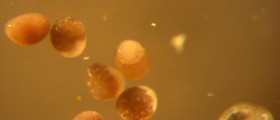
Many women take injectable fertility medications, most commonly Lupron, before a FET cycle. Lupron is prescribed for pituitary suppression and taken for around two weeks prior to the transfer of forzen embryos. Estrogen and progesterone therapies are also frequently used during cycles of frozen embryo transfer. Women who are having regular menstrual cycles and are ovulating also have the option of undergoing FET with natural cycles, meaning no hormonal preparation. While studies have shown that the pregnancy rate is not necessarily lower when FET is used in combination with natural menstrual cycles, such cycles can pose large logistical challenges that make this option an uncommon choice for fertility clinics and patients alike.
The embryo
If the embryo was frozen in the pronuclear stage, meaning immediately after fertilization, it can be grown in a lab setting for up to six days before transfer to the uterus, after thawing. Such embryos are cultured and their quality determined in the same way that would be applied if they had not been frozen (also called cryopreserved) previously. Embryos that were frozen in the blastocyst stage of development do not require this step, because it was already carried out when the embryos were created. Such embryos can be thawed and transferred on the same day, making it a less complex procedure. Many fertility clinics say that blastocyst FET has good pregnancy rates.
















Your thoughts on this
Loading...